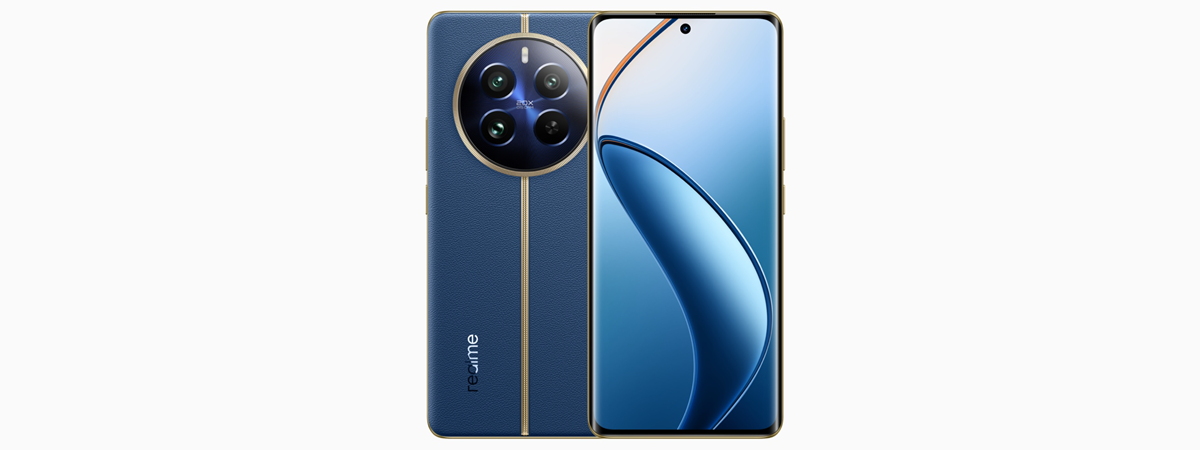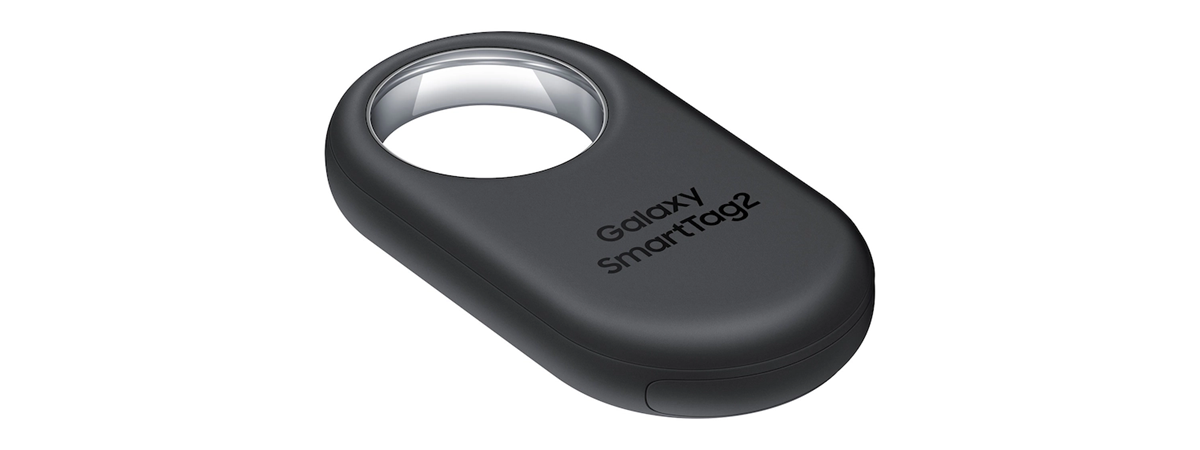
The Galaxy S24 is Samsung’s latest compact flagship phone for 2024 and many people have high expectations from it. Design-wise, it is almost identical to its predecessor. The changes are subtle, but they include new colors, materials, and improvements to the screen and battery. However, a major change is represented by the fact that Samsung is again using an Exynos processor in European markets. And to make things even more interesting, the Galaxy S24 also has some unique AI features that promise to enhance the user experience. Do they work well? And is the new Exynos 2400 chipset able to handle AI tasks well? In this review, I’ll share my impressions of the Samsung Galaxy S24 with an Exynos chipset, covering its design, features, photo and video quality, software, and performance. If you’re interested in finding out whether it is a good option for you, keep reading:
Samsung Galaxy S24: Who is it good for?
The Samsung Galaxy S24 is an excellent choice if you:
- Want a compact, high-performance Android smartphone
- Need a well built smartphone with durable materials, and an excellent display
- Yearn for a phone that can do some smart things using AI (Artificial Intelligence)
- You want excellent software support with 7 years of updates
Pros and cons
These are the things I like most about the Samsung Galaxy S24:
- High-end performance in any type of workload, including games
- Bright AMOLED screen with fast adaptive refresh rate and HDR10+
- Beautiful minimalist design
- Top-notch photography and video skills
- Available with very fast storage and lots of memory
- It is tougher than the previous Galaxy S23 model
- IP68-rated for resistance against dust and water
- Good battery life
There are a few things that can be improved:
- Fast charging is slow compared to flagships from other brands
- The 128 GB version uses the older and slower UFS 3.1 storage interface
- No support for memory cards

Verdict
When I heard that the European version of the Samsung Galaxy S24 has an Exynos 2400 chipset, I was skeptical whether it could successfully compete with the Snapdragon chipsets powering other flagships. Fortunately, my testing has revealed not only that it can compete but also that the Samsung Galaxy S24 is great in mobile games and other tasks where the graphics chip needs to deliver high performance. This is an excellent achievement, and I must say that I like this phone a lot. The Samsung Galaxy S24 is an Android smartphone with a compact body and a simple yet elegant matte look. Its high-quality display is a bit larger than last year’s Galaxy S23, its body is tougher, the cameras take high-quality pictures and record beautiful videos, and the Exynos 2400 chipset delivers a whole lot of performance. To top all that off, the One UI 6.1 interface we get on the Galaxy S24 offers some incredibly useful smart AI-powered features. Samsung Galaxy S24 proved to be a highly pleasant surprise, and I recommend it to anyone looking for a small-sized flagship.
Unboxing the Samsung Galaxy S24
The box of the Samsung Galaxy S24 smartphone is fairly small, matching the size of the smartphone. Its design is minimalistic, and its top cover features only a picture of the phone’s back and its name: Galaxy S24. On one side, you can see the device’s main specs, serial number, and IMEI numbers. The other sides are devoid of any content. On the bottom of the box, you find out that Samsung chose to use soy ink for printing and recycled materials to manufacture the packaging, thus minimizing its carbon footprint. That’s worth appreciating.
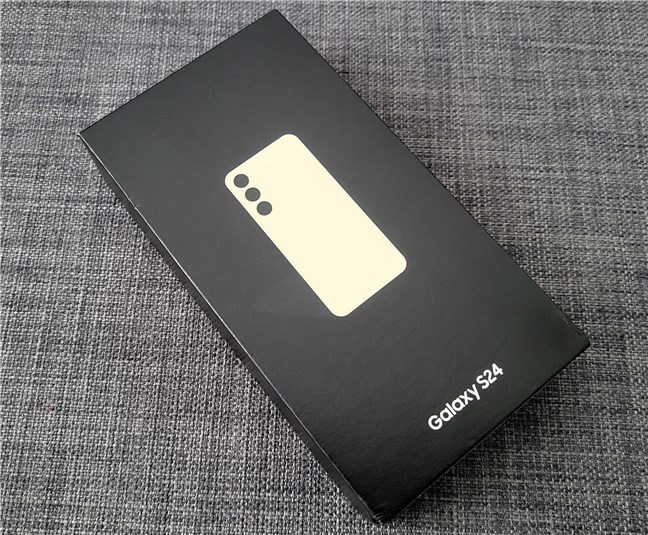
The box of the Samsung Galaxy S24
Inside the box, you will find the Samsung Galaxy S24. Along with it, there are some essential documents (such as the quick start guide and the warranty details), a SIM ejection tool, and a USB-C cable. The box doesn’t contain a charger, so you will have to either purchase one separately or use one you already own.
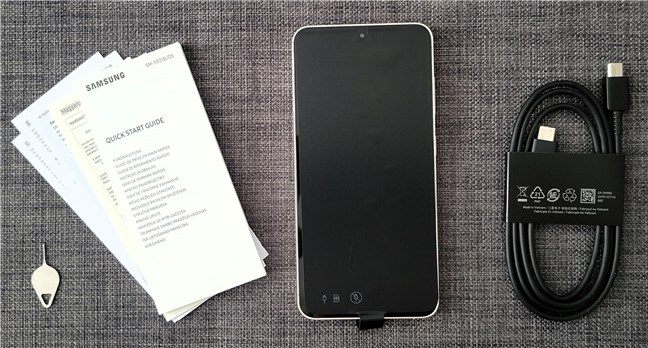
Unboxing the Samsung Galaxy S24
The Samsung Galaxy S24 comes in a minimalist and elegant box that contains only the essentials. You don’t get any extras like a smartphone cover, a fast charger, or earphones. I wish Samsung would stop copying Apple in this regard. Don’t you?
Design and build quality
The Samsung Galaxy S24 is the smaller member of the S24 family, which also includes the Galaxy S24+ and the Galaxy S24 Ultra. Weighing 168 grams (5.89 oz) and measuring 147 x 70.6 x 7.6 mm (or 5.79 x 2.78 x 0.30 inches) in width x depth x height, the S24 feels almost identical to last year’s Galaxy S23. Still, among other hardware upgrades, the company also managed to somehow squeeze a 6.2-inch display on the Galaxy S24. That’s slightly larger than the 6.1-inch screen found on the previous Samsung Galaxy S23.
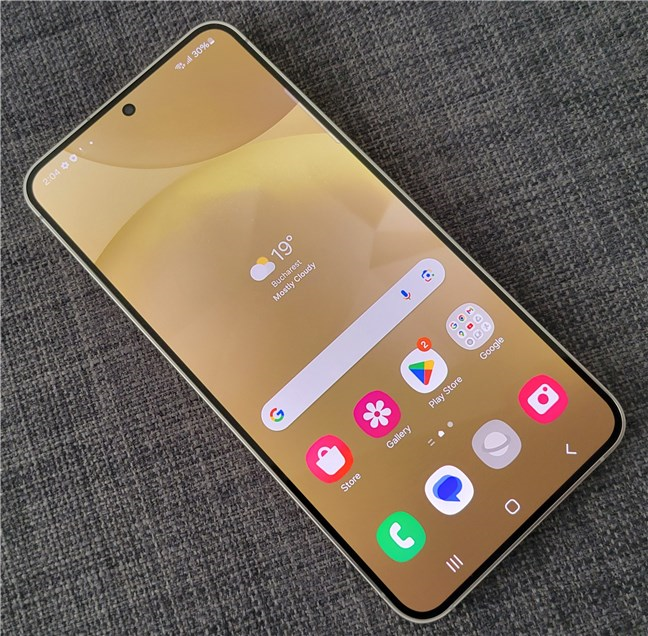
The screen of the Samsung Galaxy S24
The body of the phone is crafted on an aluminum frame (version 2), which Samsung advertises to offer more durability against drops than its predecessors. The display and the rear panel are shielded by the newest Corning Gorilla Glass Victus 2, which improves the phone’s ability to withstand scratches. Moreover, the S24 also holds an IP68 certification for protection against dust and water (up to 30 minutes at a depth of 1.5 meters).
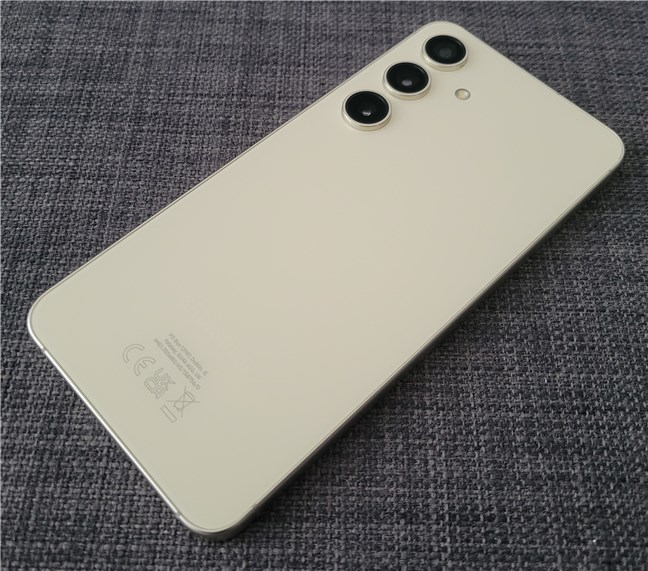
The back of the Samsung Galaxy S24
Samsung offers the Galaxy S24 smartphone in a variety of color options. You can pick from seven matte shades: Onyx Black, Marble Grey, Cobalt Violet, Jade Green, Sandstone Orange, Sapphire Blue, and Amber Yellow. I had the opportunity to test the latter - Amber Yellow.

Color options for the Samsung Galaxy S24
The display covers almost the entire front of the device, with extremely thin bezels and a discreet camera cutout at the top. The speaker is also cleverly hidden above the camera, making the front look sleek and elegant.
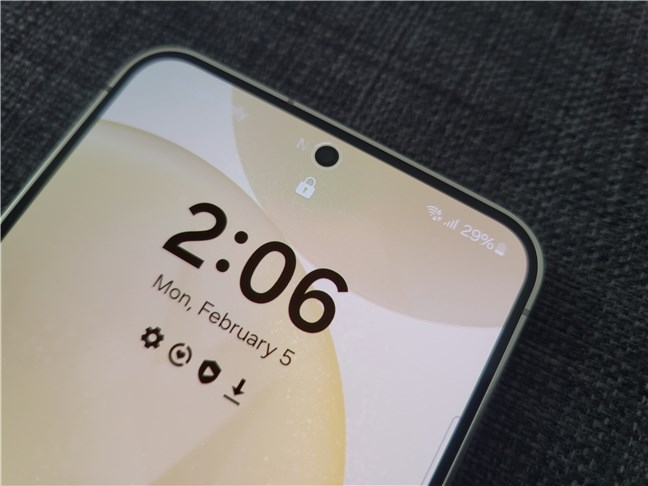
Samsung Galaxy S24's selfie camera
The phone’s left edge lacks any features, as the other sides are where you’ll find the buttons, speakers, charging port, etc.

The left edge is empty
You’ll find the power and volume buttons on the phone’s right side. They are slim but long and stick out a bit, so you can feel them easily, even without looking at them. Also, since this is a compact phone, the buttons are easy to press with either hand.

The right edge holds the buttons
On the upper edge of the device, there’s only a pair of tiny openings for the microphone.
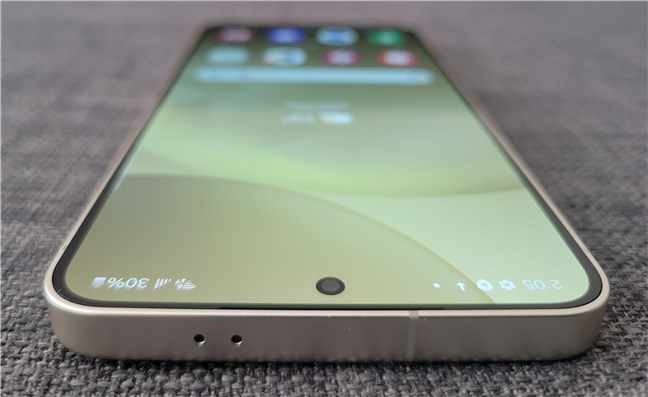
The top edge is home to two microphone holes
As usual, the phone’s bottom edge has the most features/components. Located here, you’ll find the SIM card slot, the main mic, the USB-C port, and the loudspeaker.
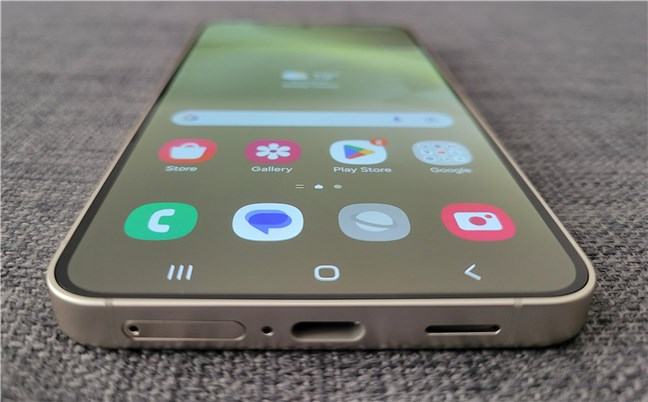
The bottom edge holds the SIM, microphone, USB-C port, and loudspeaker
The smartphone’s rear side features a triple-camera system, an LED flash, and the Samsung logo. The camera system has a similar design to the previous Galaxy S23 model: three lenses that slightly stick out from the back of the device. They have an elegant and minimalistic appearance, unlike the bulky and conspicuous camera modules on many other phones. Furthermore, thanks to its compact size and matte glass on the back, the phone has a good grip and feels good to hold in your hand.
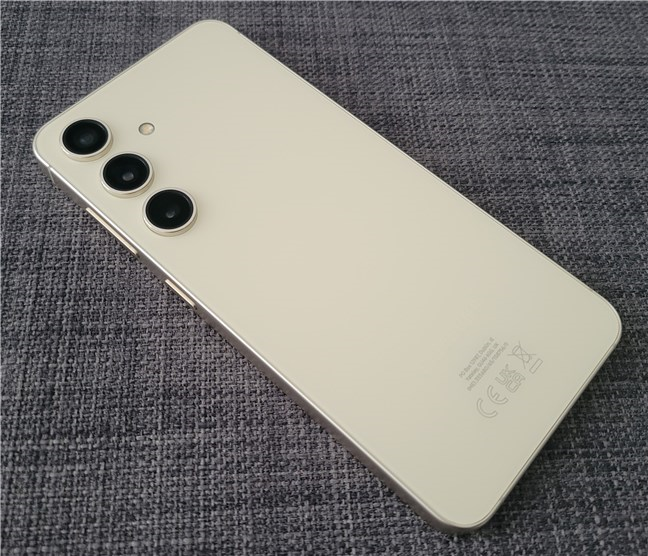
The back of the phone is matte
The Samsung Galaxy S24 is a well-designed and well-built smartphone that you’ll like holding in your hand. It has a similarly elegant appearance to the previous model, with a similar compact size.
Hardware specifications
Depending on the region or country you live in, the Samsung Galaxy S24 can be equipped with either a Qualcomm or an Exynos SoC (System on a Chip). In the United States, Canada, and China, the S24 uses a Qualcomm SM8650-AC Snapdragon 8 Gen 3 for Galaxy. In the rest of the world, including Europe (where I reside), the Galaxy S24 is based on a Samsung Exynos 2400 chipset, and this is the model I tested. The Exynos 2400 is fabricated using a 4-nanometer process and features 10 cores:
- one 3.2 GHz Cortex-X4
- two 2.9 GHz Cortex-A720
- three 2.6 GHz Cortex-A720
- four 1.95 GHz Cortex-A520
The Exynos 2400 chipset also includes an Xclipse 940 graphics unit built on AMD’s RDNA 3 architecture with hardware-accelerated ray tracing. Furthermore, the NPU (Neural Processing Unit) inside the chipset is theoretically capable of delivering up to 14.7x improvement over the previous-gen Exynos 2200. In case you’re wondering, the NPU is a part of the SoC that’s specifically designed to accelerate neural network operations and AI (Artificial Intelligence) tasks - a focus area for this year’s S24 line-up.
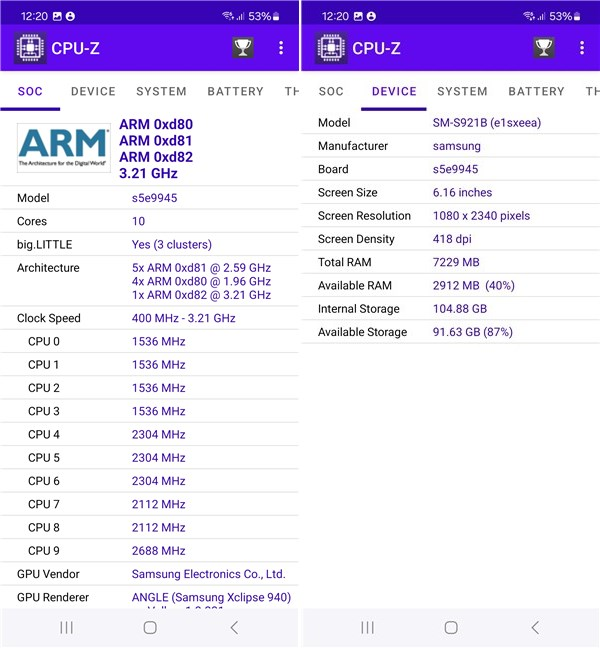
Tech specs for the Samsung Galaxy S24
The Samsung Galaxy S24 smartphone is available in three different versions in terms of memory and storage capacity:
- 8 GB of RAM plus 128 GB of storage,
- 8 GB of RAM plus 256 GB of storage,
- 12 GB of RAM plus 256 GB of storage,
- 12 GB of RAM plus 512 GB of storage.
Except for the 128 GB version that uses UFS 3.1 for its storage, the other models (with 256 GB and 512 GB) all come with UFS 4.0 storage. UFS stands for Universal Flash Storage and is a standard interface designed for use in devices where power consumption is paramount. UFS 3.1 is fast, but UFS 4.0 is even faster, delivering data reading and writing speeds comparable to those of solid-state drives.
Though the model I tested was the more affordable one (8 GB RAM with 128 GB of storage), I recommend looking into the versions with more capacity (256 or 512 GB) for the best experience. The smartphone doesn’t offer support for memory cards, and roughly 27 GB of storage is taken by the operating system and default apps.
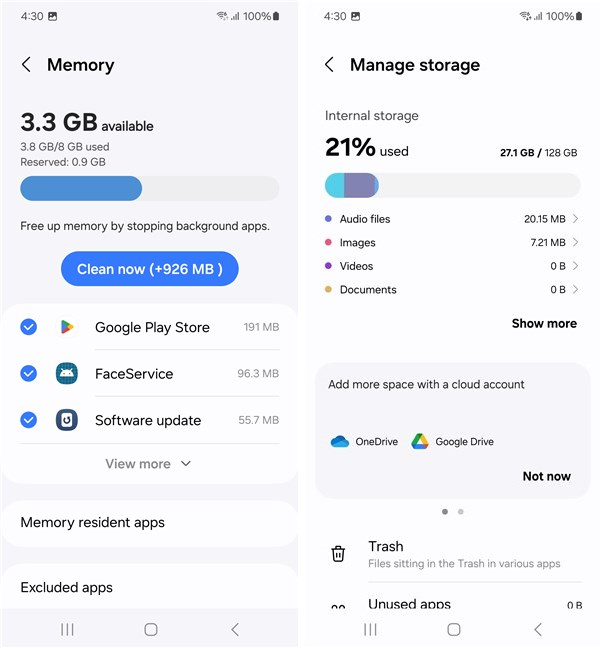
Memory and storage details
The Samsung Galaxy S24 offers dual-SIM functionality, allowing you to use two nano-SIM cards, two eSIM cards, or a combination of both.
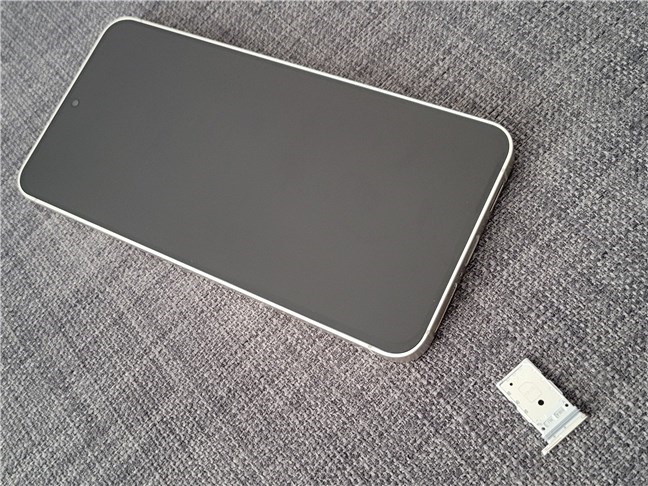
The Samsung Galaxy S24 is a dual-SIM phone
The screen of the Samsung Galaxy S24 features a 6.2-inch Dynamic LTPO AMOLED 2X display with a high FHD+ resolution (1080 x 2340 pixels) and a sharp 416 ppi (pixels per inch) density. The display supports a maximum refresh rate of 120 Hz, is compatible with HDR10+, and can reach a peak brightness of 2600 nits for outdoor visibility.
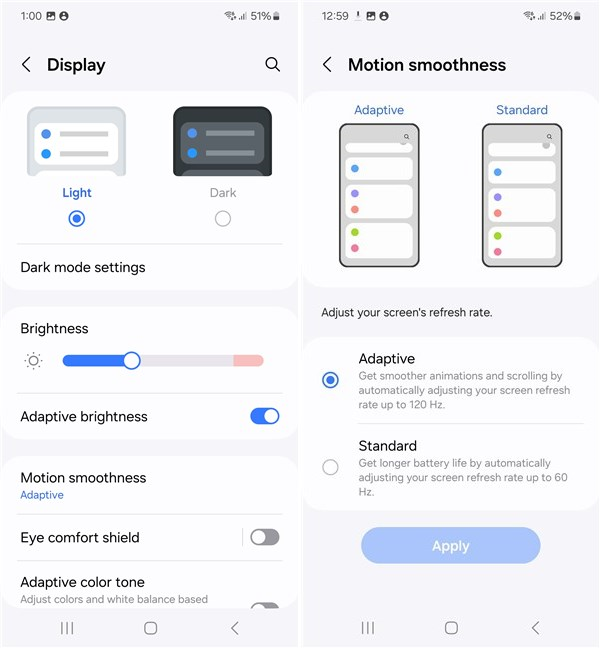
The display has adaptive brightness and refresh rate
In terms of cameras, the Samsung Galaxy S24 includes:
- A primary wide camera based on a 50-megapixel sensor, with an aperture of f/1.8, Dual Pixel PDAF (phase-detection autofocus), and OIS (optical image stabilization).
- A secondary telephoto camera based on a 10-megapixel sensor with 3x optical zoom, f/2.4 aperture, PDAF, and OIS.
- A third ultrawide camera based on a 12-megapixel sensor with a 120˚ field of view, f/2.2 aperture, and support for Super Steady video recording.
- A 12-megapixel selfie camera with an aperture of f/2.2 and Dual Pixel PDAF.
Using the rear cameras, the smartphone can record video in 8K resolution at 30 frames per second (fps), 4K at 30/60 fps, or 1080p at 30/60fps. Videos can also be captured with HDR10+, stereo sound, and gyro-EIS (Electronic Image Stabilization) for steadier recording. The selfie camera maxes at 4K and 30/60 fps, but it can also use HDR10+ for video recordings.
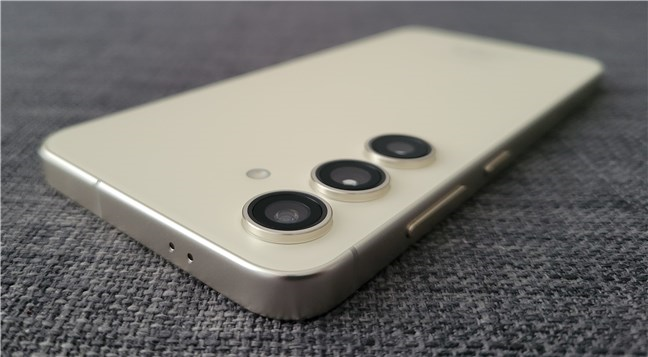
The rear cameras on the Samsung Galaxy S24
The Samsung Galaxy S24 is compatible with both LTE and 5G networks, offering fast and reliable mobile connectivity. It features a Bluetooth 5.3 chip for low-energy and high-speed data transfers with other devices, and it also supports Wi-Fi 6 (2.4 and 5 GHz) and Wi-Fi 6E (6 GHz) standards for wireless networks. There’s also an NFC chip, which is useful for making wireless payments, plus a range of other various sensors, such as an ultrasonic fingerprint scanner (under the display), an accelerometer, a proximity sensor, a gyroscope, a compass, and a barometer.
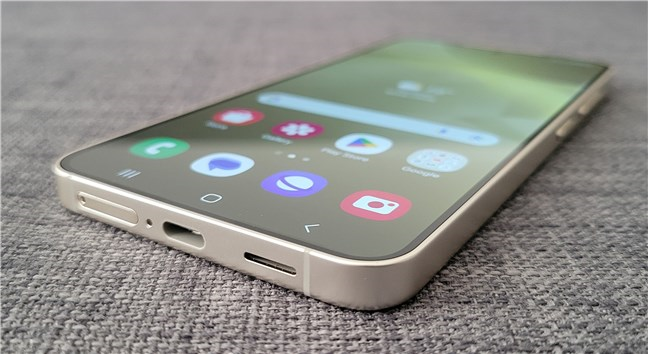
Samsung's Galaxy S24 has Wi-Fi 6E
The Samsung Galaxy S24 is powered by a 4000 mAh Li-Po non-removable battery. It should be enough to last you for a whole day. It also supports 25W PD3.0 wired fast charging and 15W wireless charging.
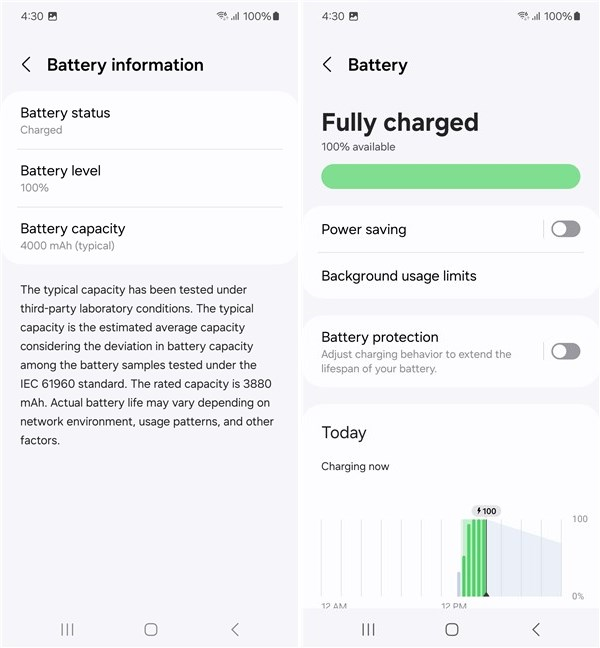
Battery details for the Samsung Galaxy S24
If you want more information about this smartphone’s specs and features, you can check them all on its official webpage: Samsung Galaxy S24.
The Samsung Galaxy S24 is more or less an incremental upgrade over last year’s S23. The new compact flagship features a faster processor, a stronger metal body, and a slightly larger display and battery.
How does the Samsung Galaxy S24 perform in real life? On the next page, I’ll show you what using it was like for me. I’ll also tell you a bit about the phone’s cameras, software, and how it fared in several benchmarks. I also compare it to the Samsung Galaxy S23 so that you get a better perspective on the performance improvements delivered by the new model.


 15.02.2024
15.02.2024 